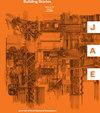Dalibor Veselý’s Performance of Crisis
IF 0.5
4区 艺术学
0 ARCHITECTURE
引用次数: 0
Abstract
This paper describes a key formative moment in Dalibor Veselý’s life in Prague in the 1960s in the context of dissident forms of artistic production in which he attempted to publicly oppose the ideological constraints of socialist Czechoslovakia. Within this context, which occurred just before his emigration to the United Kingdom, Veselý developed a particular metaphysical language—that of heights and depths, truth and falsity, interiority and exteriority, impossible tensions and necessary choices—and he carried this language with him throughout his career as an architectural educator as a discourse of crisis. This paper interprets Veselý’s later discourse of crisis, therefore, as having its roots partly in the philosophical anthropology and phenomenology that he was studying in the 1960s, yet it goes on to argue that its political import came from the way in which ideological constraints operated in the 1960s, creating a sense of political and socio-economic brokenness, both in the socialist East and capitalist West. In contrast to the increasingly commonly accepted view indebted to the legacy of poststructuralism that such a metaphysical language is inherently foundationalist, this paper argues that it is possible to view such a discourse as a performance; which is to say, as something that seeks to imagine a degree of certainty for the purposes of fostering sentiments and committments, precisely when no such certainty exists. In spite of Veselý’s leaning towards the themes of tradition, myth and European culture, it is nonetheless possible to view his performance of crisis as a discursive tool useful today in helping individuals mark a moment of truth, and take a stand against a world which they perceive to be false and clouded in ideological constraints.达利伯Veselý危机的表现
本文描述了20世纪60年代达利博尔·维塞尔在布拉格生活中的一个关键形成时刻,当时他试图公开反对社会主义捷克斯洛伐克的意识形态限制。在这种背景下,就在他移居英国之前,Veselý发展了一种特殊的形而上学语言——高度和深度、真实和虚假、内在和外在、不可能的紧张和必要的选择——在他作为建筑教育家的整个职业生涯中,他将这种语言作为一种危机话语随身携带。因此,本文将韦塞尔后来关于危机的论述解释为,其部分根源于他在20世纪60年代研究的哲学人类学和现象学,但它继续认为,其政治意义来自于20世纪60年意识形态约束的运作方式,创造了一种政治和社会经济破碎感,无论是在社会主义的东方还是资本主义的西方。由于后结构主义的遗产,人们越来越普遍地认为这种形而上学的语言本质上是基础主义的,与此相反,本文认为有可能将这种话语视为一种表演;也就是说,作为一种试图想象一定程度的确定性的东西,以培养情感和承诺,而恰恰是在不存在这种确定性的时候。尽管Veselý倾向于传统、神话和欧洲文化的主题,但我们仍然可以将他对危机的表现视为一种话语工具,在今天有助于帮助个人标记真相时刻,并对一个他们认为是虚假的、受意识形态约束的世界采取立场。
本文章由计算机程序翻译,如有差异,请以英文原文为准。
求助全文
约1分钟内获得全文
求助全文
来源期刊

Journal of Architectural Education
ARCHITECTURE-
CiteScore
0.60
自引率
0.00%
发文量
18
期刊介绍:
The Journal of Architectural Education (JAE) has been published since 1947 for the purpose of enhancing architectural scholarship in design, history, urbanism, cultural studies, technology, theory, and practice. Published on behalf of the Association of Collegiate Schools of Architecture, JAE appears twice annually in October and March, with the October issue being the first of a new volume.
 求助内容:
求助内容: 应助结果提醒方式:
应助结果提醒方式:


